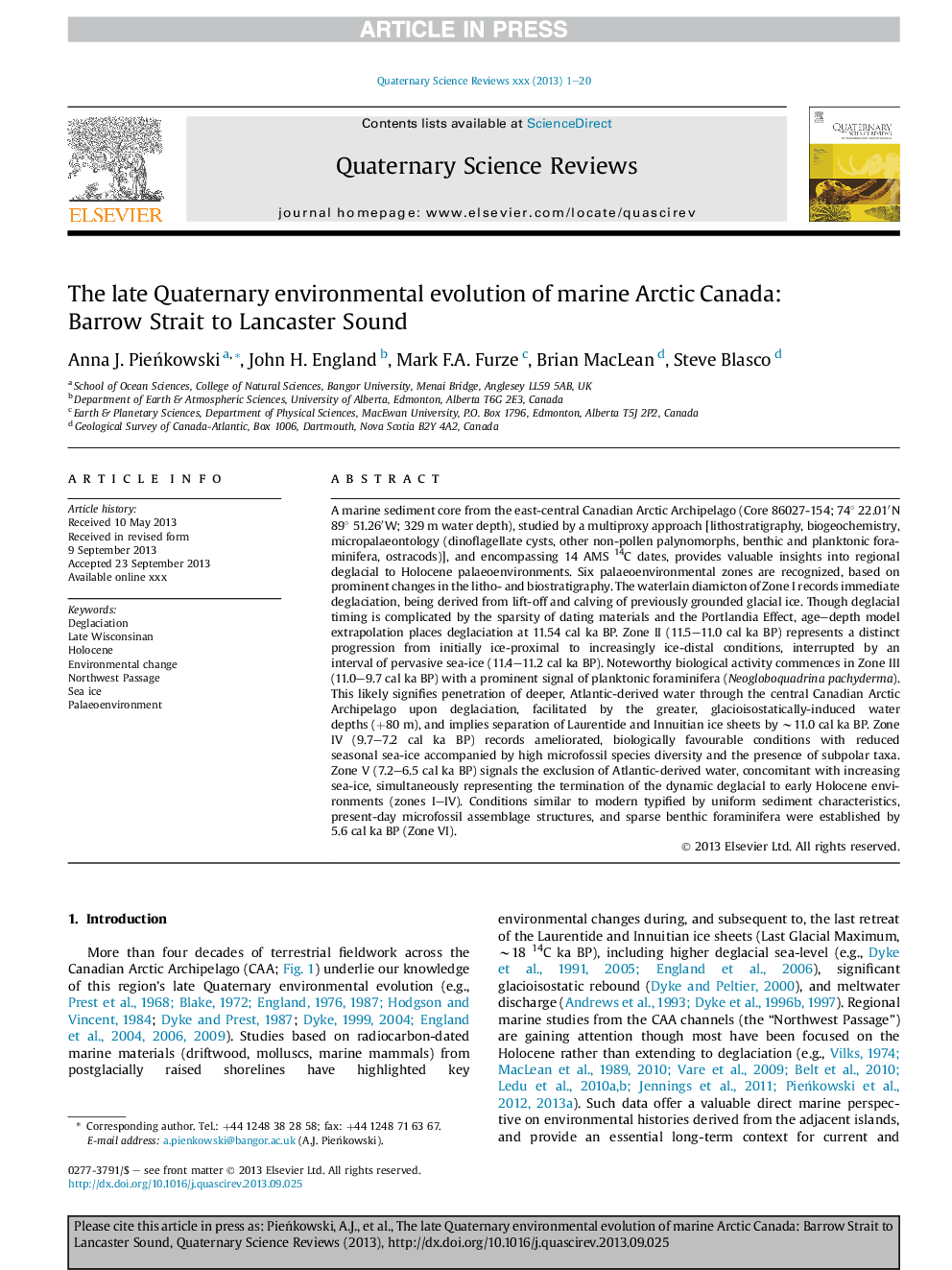| Article ID | Journal | Published Year | Pages | File Type |
|---|---|---|---|---|
| 6445601 | Quaternary Science Reviews | 2014 | 20 Pages |
Abstract
A marine sediment core from the east-central Canadian Arctic Archipelago (Core 86027-154; 74° 22.01â²N 89° 51.26â²W; 329 m water depth), studied by a multiproxy approach [lithostratigraphy, biogeochemistry, micropalaeontology (dinoflagellate cysts, other non-pollen palynomorphs, benthic and planktonic foraminifera, ostracods)], and encompassing 14 AMS 14C dates, provides valuable insights into regional deglacial to Holocene palaeoenvironments. Six palaeoenvironmental zones are recognized, based on prominent changes in the litho- and biostratigraphy. The waterlain diamicton of Zone I records immediate deglaciation, being derived from lift-off and calving of previously grounded glacial ice. Though deglacial timing is complicated by the sparsity of dating materials and the Portlandia Effect, age-depth model extrapolation places deglaciation at 11.54 cal ka BP. Zone II (11.5-11.0 cal ka BP) represents a distinct progression from initially ice-proximal to increasingly ice-distal conditions, interrupted by an interval of pervasive sea-ice (11.4-11.2 cal ka BP). Noteworthy biological activity commences in Zone III (11.0-9.7 cal ka BP) with a prominent signal of planktonic foraminifera (Neogloboquadrina pachyderma). This likely signifies penetration of deeper, Atlantic-derived water through the central Canadian Arctic Archipelago upon deglaciation, facilitated by the greater, glacioisostatically-induced water depths (+80 m), and implies separation of Laurentide and Innuitian ice sheets by â¼11.0 cal ka BP. Zone IV (9.7-7.2 cal ka BP) records ameliorated, biologically favourable conditions with reduced seasonal sea-ice accompanied by high microfossil species diversity and the presence of subpolar taxa. Zone V (7.2-6.5 cal ka BP) signals the exclusion of Atlantic-derived water, concomitant with increasing sea-ice, simultaneously representing the termination of the dynamic deglacial to early Holocene environments (zones I-IV). Conditions similar to modern typified by uniform sediment characteristics, present-day microfossil assemblage structures, and sparse benthic foraminifera were established by 5.6 cal ka BP (Zone VI).
Related Topics
Physical Sciences and Engineering
Earth and Planetary Sciences
Geology
Authors
Anna J. PieÅkowski, John H. England, Mark F.A. Furze, Brian MacLean, Steve Blasco,
